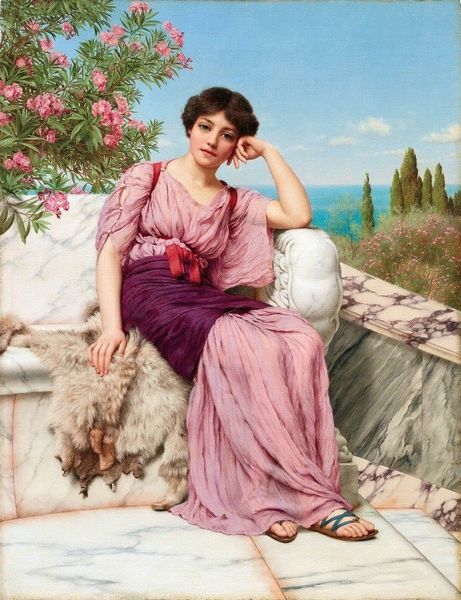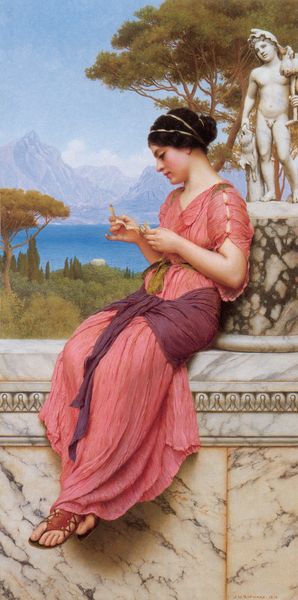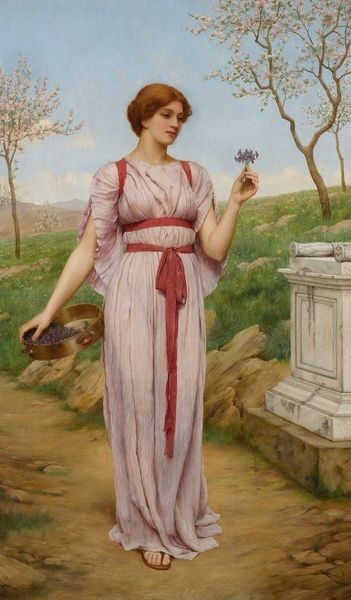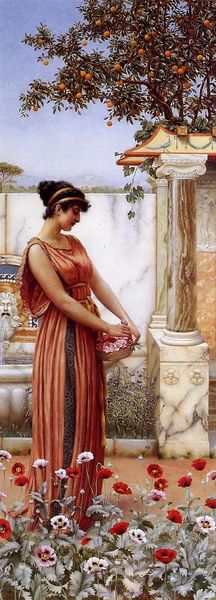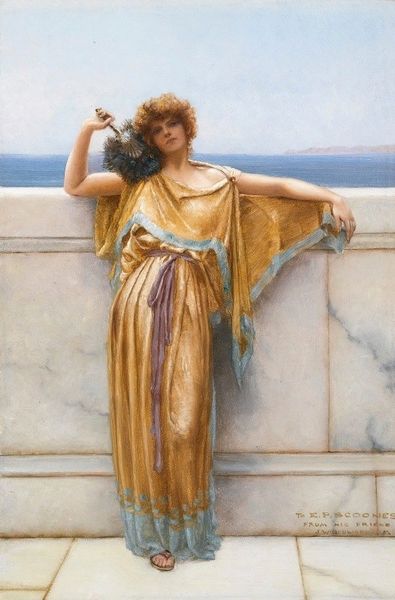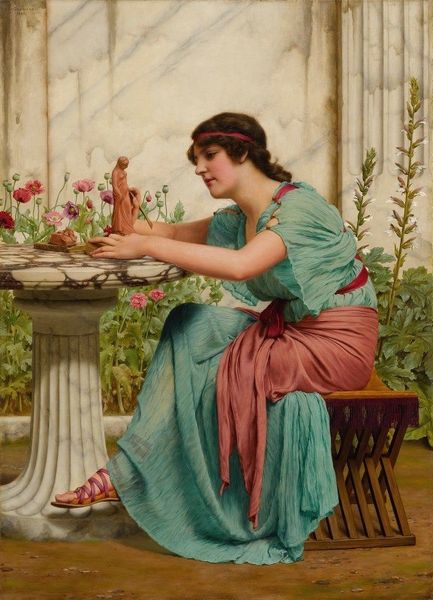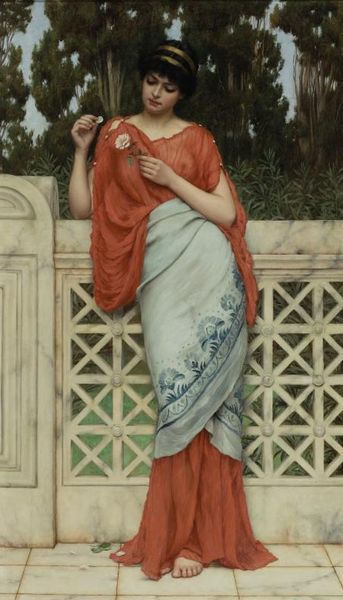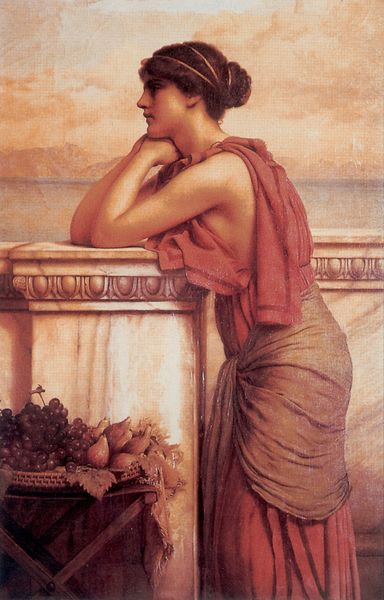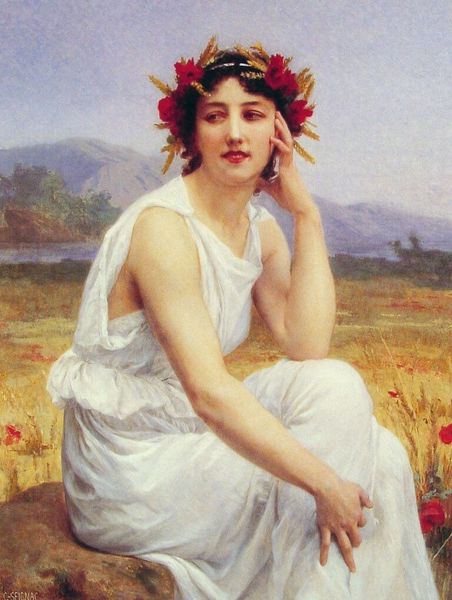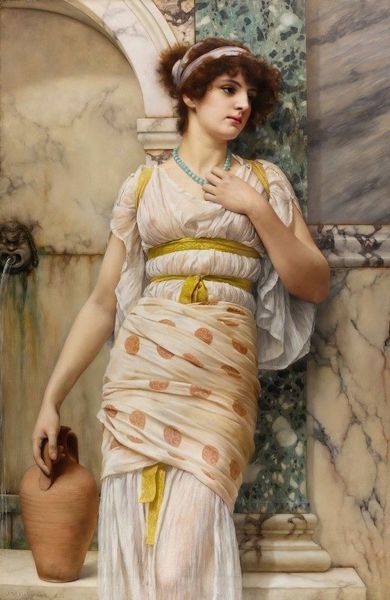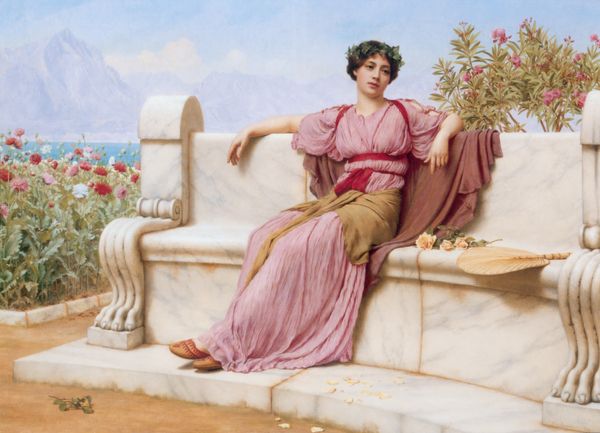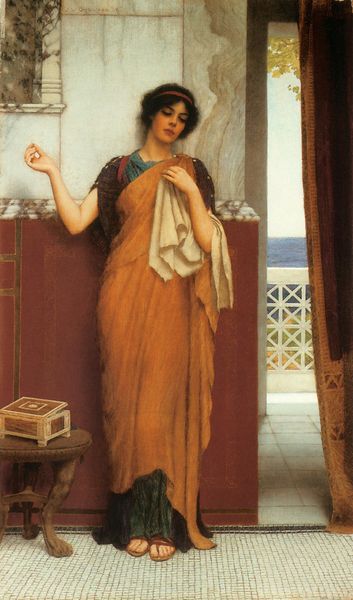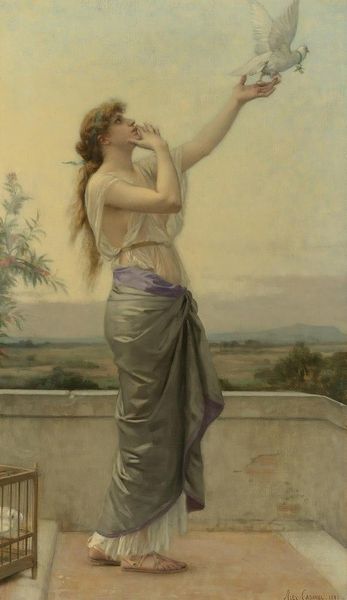
Copyright: Public Domain: Artvee
Editor: "The Fragrant Rose," painted in 1892 by John William Godward, it's oil on canvas, of course, and strikes me as profoundly serene. What do you make of it? Curator: The rose, above all, interests me here. Consider the visual language. It's not just a rose; it's the *Fragrant* Rose. Godward, like many artists of his time, tapped into a long lineage of associating roses with secrecy, love, beauty, but also, and more subtly, with ephemerality. Where do you think that last reading, that ephemeral nature, comes into play in this painting? Editor: I guess it's partly the fact she's literally inhaling it. Like she’s trying to capture that fleeting moment before it fades? Curator: Exactly. The olfactory sense is powerfully connected to memory, isn't it? This woman, in her idealized classical garb, seems to be attempting to hold onto a memory, an experience. And what do you notice about where Godward places that rose? Editor: That’s a great point; it is really highlighted in the composition of the piece; its placement close to her nose and the light illuminating it both guide the eye there. Curator: Precisely! And, consider the subtle contrast between the transient rose and the permanence suggested by the marble. What memories, what legacies are suggested or obscured in that visual tension? It all becomes so symbolic when we understand it. Editor: That's fascinating; I hadn’t considered how powerfully the symbolism shapes the meaning. Curator: Art allows for deep contemplation when you start reading for its meaning. Editor: I'll definitely be more aware of symbolism in paintings from now on. Curator: Excellent; keep asking questions!
Comments
No comments
Be the first to comment and join the conversation on the ultimate creative platform.
